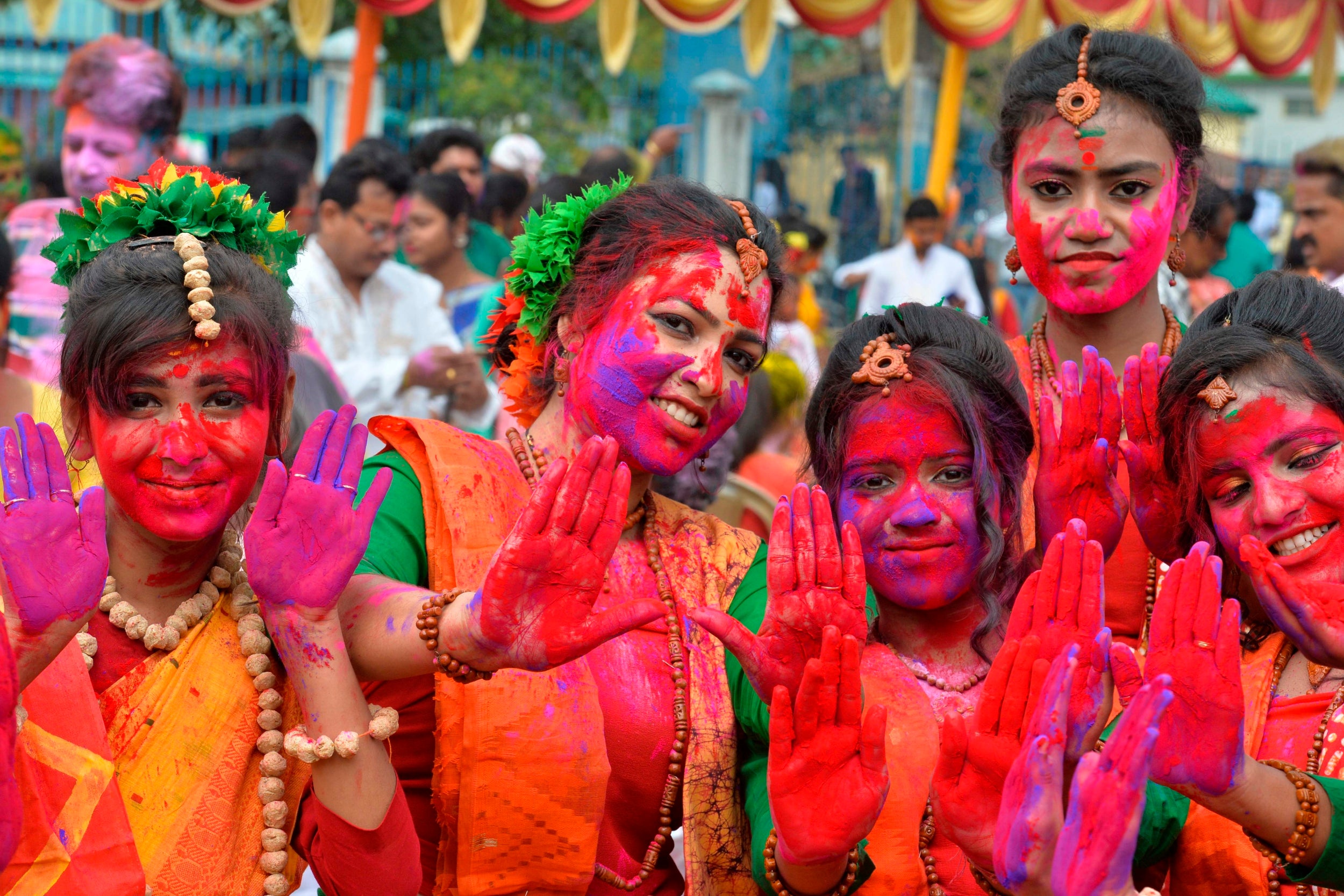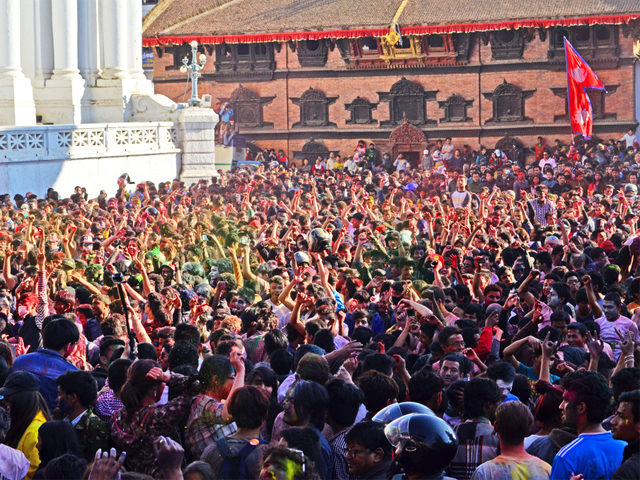The Festival of Colors: Holi,Its Origin and Facts
Nepal is a country full of art,culture and traditions. In Nepal more than 200 festivals are celebrated which is the record of most festivals celebrated in the world. Holi is one of them,which reflects Nepali culture. It is also considered as Phagu Purnima. Holi is celebrated in Hindu culture every year on the day of Phagun Shukla Purnima i.e. Holi Purnima. Holi is an important festival of Hindus in Nepal, India and other countries.This festival is celebrated in the month of Fagun in the spring. Holi is a festival of colors. On the day of Holi, people paint each other with different colors. There is a reason and history for celebrating Holi.

Nepali Girl Holi
Holika is burnt on the night before the day of Holi. After burning Holi at night, it is customary to dissolve the dye in water and throw it on top of each other in the morning. It is said that on the day of Holi, ‘People get together and celebrtate holli by ending old clashes, misunderstandings and forgetting enmity’. This festival is also called Fagu as it is celebrated in the month of Falgun.It is celebrated with colors and water by having fun with each other. In the Terai region, this festival is celebrated the next day. The holy day of Phagun Shukla Purnima is known as Phagu Purnima. Therefore, the importance of the 12 full moons of the year seems to be special from one to the other.
The Holi’s Origin Story
There is a popular story about how the Holi festival started. Earlier, Hiranyakashipu, the son of Kasyapa sage and Diti Mata, had four sons – Hrad, Anuhrad, Sanhrad and Prahlad. Among themn Prahlad was the big follower of Lord Bishnu. He used to pray Lord Bishnu day and night.Saying that Prahlad was devoting himself to his enemy, Hiranya Kashyap tried hard to kill the devotee Prahlad. Meanwhile, Prahlad did not stop worshiping Lord Vishnu. He was poisoned, trampled by an elephant, dropped from a mountain, bitten by a snake, but nothing happened to Prahlad. He was safe. When no action was taken, Hiranyakashipu, with the help of his sister Holika, planned to burn him to death. Because Holika had the gift of Brahma – no matter how much the flames of fire were, could not burn Holika.

Nepali Girls In Holi
The ego of Brahma’s gift took Holika Prahlada in its arms and fell into the flames, but the truth of the gift could not work for the arrogant, arrogant devotee Prahlad was not burnt by fire but the sinful Holika was burnt by fire. Hiranya Kashipuki’s sister Holika was cremated and a big celebration was held for the safety of Prahlad.The grain burned in the fire is called ‘Holka’ in Sanskrit. Earlier, a massive yajna was performed on the full moon day of Phagun Shukla. In that sacrifice, Nawanna who entered his house was sacrificed. This festival may be called the celebration of Holi because of the joy of wearing tilak made from that sacrifice.
In every era(yug), Holi seems to have been celebrated with the same joy. The importance of Holi festival seem to have been even in the earlier Treta era. In the time of Raghu Raja, there was a demon named Dhunda.,the evil one killed all the children.Seeing such a move of the demon, the people became victims. On the day of Phagun Shukla Purnima, all the children danced and sang according to the order of the sage Narad.Burning fire on the streets and dancing and singing would make the demon powerless and since then the trend of Holi was started.

Holi in Basantapur
Preservation Of The Cultural Trend
In fact, the word “Phagu” means yellow dust inside a pine tree. Earlier, when there was no tradition of different colors like Abir, Keshari, etc., Phagu was celebrated by rubbing the yellow dust inside the pine nuts. As it is a festival celebrated by Phagu Dalera, this festival is called Phagu. Phagu is a festival of joy, happiness and merriment.But it is only natural to be saddened to see that the cultural values have been misunderstood when we have seen the practice of painting mud against the will of someone, forcing them to paint against the will of someone, throwing ‘lolas’ and water balloons. The Phagu festival, which carries religious, cultural, historical and social values, is our invaluable identity.

Holi Face Paints
Although the historical tradition of Holi is different, nowadays there are various distortions in the name of Holi. There are also some examples. The incident a few days ago happened to a female friend who was preparing for the high school exam. Tuition class was running in the college. While going to take classes with friends, someone hit her with a water balloon against her will . His clothes were unkempt and his hair was wet. The other friends who were with her ran away.
There are many such incidents in the boat of Holi. Lola has to return home due to her injuries when she goes out for work. Someone’s ear mesh is broken and her hand is broken. The practice of throwing Lola from the roof, not only that, but also directly from the bucket, is not to revive the culture of Holi, but to invite perversion.We should be responsible and play Holi in cultured and mannered way to preserve its importance.
Comment Here!